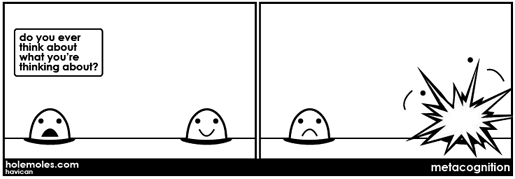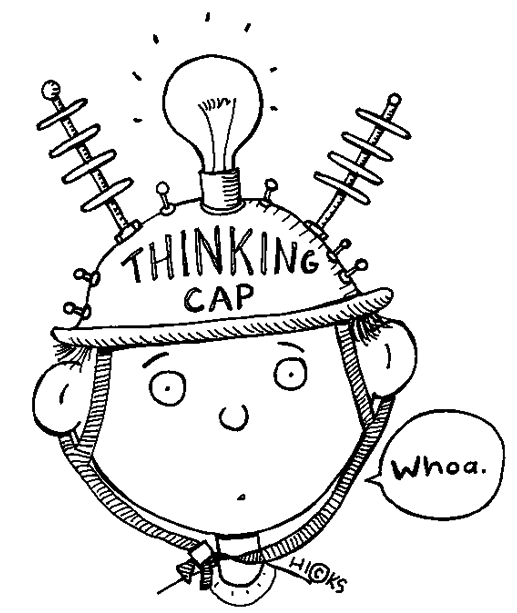Active Learning
28 What is Active Learning?
Chapter Objectives
- Define active learning
- Survey various models of active learning
- Understand why active learning is pedagogically effective
- Identify opportunities and benefits to using active learning
- Begin to implement feasible pedagogical approaches to active learning
Active Learning?
Yeah, you heard right. ACTIVE learning. The phrase may conjure up all kinds of images and associations, from shop class to Montessori preschools to new age creative writing instructors who lead participatory vision quests and don’t believe in grades, structure, or lecturing, to imaginative peers who struggled in the disciplinary regimes of old-school instruction, like our good friend Calvin:

While we’ll introduce and explore a few approaches to active learning together as the week continues, we wanted to provide a few initial assumptions up front to help introduce you to the topic as we understand it. In its most elemental form, active learning means doing things and thinking about the things that you’re doing (what psychologists call metacognition).

Countless examples from the history of education demonstrate both that people tend to support what they help create and that meaningful learning is strongly correlated with learners’ active involvement in learning processes. All of us want to be better learners and to stimulate meaningful learning for others, and there’s a (growing) mountain of evidence that when properly applied, active learning can help in major ways: it’s challenging, it’s effective, it’s participatory, and best of all, it’s fun!
This online workshop session on active learning is intended to instigate meaningful learning and thoughtful reflection about your own participation in teaching and learning. Wha? A module on active learning that itself employs active learning techniques? Meta-cognition about meta-cognition?

Yep. In this session we’ll provide some means-tested, effective ways to incorporate active learning into your lives, introduce you to some of the ongoing conversations around the topic in higher education, and invite you to take an active role in constructing useful knowledges on this topic. Let’s get started!
 Share & Connect
Share & Connect
Activity: Active Learning Definitions
- Search the web (or available print texts) for some definitions of ‘active learning’
- Post the definition that seems most compelling to you (along with the source) under the “Compelling definitions from the web” heading on our Active Learning Definitions Wiki Page.
- Now develop your optimal definition of active learning. Consider your own teaching and learning style and your educational philosophy. Post your definition under the “Your optimal definitions” heading on our Active Learning Definitions Wiki Page.
- Read and consider definitions from your peers!
Active Learning: A Working Definition
Now that you’ve read some of the definitions of ‘active learning’ floating around on the free web and created your own working definition of the term, we’d like to share some of our ideas about active learning, offer some history and context for the term, and explain why we believe it can help you accomplish many of your own personal learning (and teaching) outcomes.
Earlier we wrote that active learning could be simply defined as doing things and thinking about what you’re doing. While that’s true, another functional definition of active learning would be the intentional construction of skills, abilities, or knowledges through participation or contribution. We believe that active learning does the following:
requires high levels of involvement in information gathering, analyzing, and problem solving processes
invites reflection upon ideas and how one has, is, or will use those ideas, and
includes regular assessments of one’s degree of understanding and skill at handling concepts or problems in a particular discipline.
Active learning, in our experience, is also closely allied with what many educators refer to as Student-Centered Instruction [SCI]. Student-Centered Instruction is an approach to instruction which prioritizes the abilities, needs, and interests of the student (learner), so that student needs determine course content, activities, materials, and pace of learning. Instructors provide structured opportunities for students to learn independently and from their peers, encouraging them to become fully involved in their own learning and coaching them as they develop any skills they need to do so effectively.
Here are some general characteristics of active learning:
Learners do more than just listen.
Learners engage in structured, exploratory activities that stretch their current levels of knowledge and ability.
Learners construct knowledge together, working collaboratively, exchanging ideas, testing, extending, developing, and evaluating each others’ ideas, and sharing instructional responsibilities.
Learners devote significant amounts of physical, psychological, and intellectual energy to learning tasks and class projects.
Learner effort is focused more on acquiring and developing skills and competencies than on receiving transmitted information or explanations.
Learners are involved in higher-order thinking and making activities (analyzing, synthesizing, evaluating, creating, translating).
Learners regularly monitor and evaluate their own attitudes and values.
While we believe that all participants have a shared responsibility for producing an environment conducive to active learning, it’s true that instructors still bear much of the responsibility for cultivating spaces where active learning is the norm and learners can flourish in the ways described above. In the next pages of this module, we’ll explore some of the ways that instructors have helped facilitate active learning, but first, we want to invite all of you to think about and share some of your own succesful experiences as active learners in the activity below.
 Share & Connect
Share & Connect
Discussion Activity
Please write down your answers to the following questions:
What’s something that you made a conscious effort to learn in the past year?
What were some of the methods you used to learn this thing? Which of these methods did you find most useful to you in your learning process?
What’s something you’d like to learn in the coming year?
Based on your own prior experiences, what are some learning methods you will use in working to accomplishing this goal?
Media Attributions
- 3-modesC

